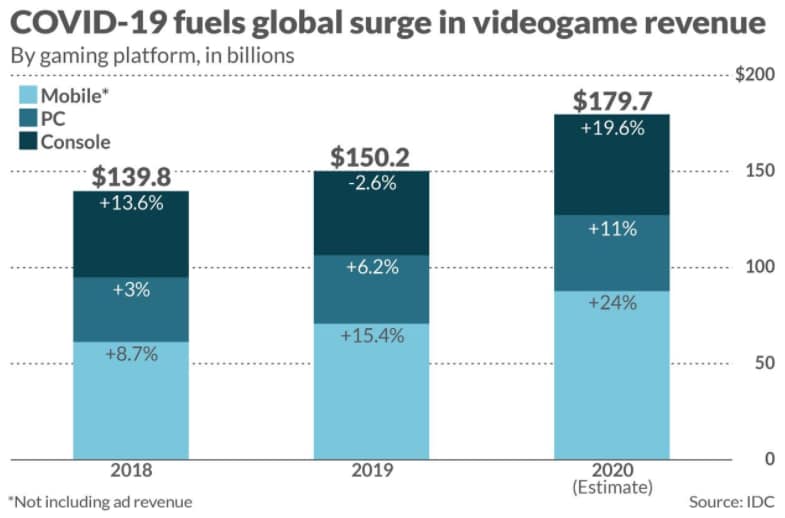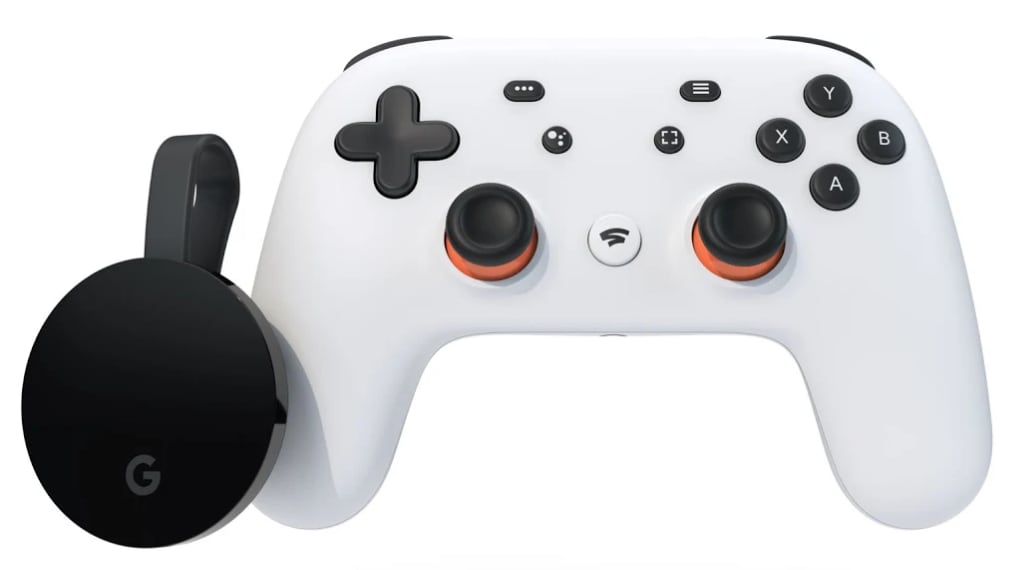The evolution of video games has long been enabled by the evolution of computing capabilities – more memory, better graphics, liquid-cooling systems, and ever-growing hard drives. From 8-bit gaming consoles of the 1980’s to the PC-like power of Sony’s PlayStation 5, it’s been a long and amazing road for video games.
But what if another evolution is happening right now? An evolution in gaming that demands not just great graphics and processing power, but fast internet and equally fast WiFi. An evolution that makes playing the latest games accessible to more gamers thanks to products like Google’s Stadia.
It’s already happening. For years, the way we buy and play video games has shifted. The industry is shifting still with the introduction of streaming services like Twitch, and competitive eSports.
Let’s take a closer look at this evolution.
The Evolving Gaming Industry
2020 was a challenging year for many as COVID-19 forced most of the United States (and the world) indoors. It should be no surprise that the video game industry saw huge growth during this time as a result. According to MarketWatch, “Global video game revenue is expected to surge 20% to $179.7 billion in 2020, according to IDC data, making the video game industry a bigger moneymaker than the global movie and North American sports industries combined.”
Whoa.

Additionally, “the global eSports market was valued at just over 950 million U.S. dollars”, according to Statista. These sources and other experts expect this to continue climbing. Video games have evolved from something you just do to something you do and something you watch.
Downloading is How Gamers Buy
How gamers purchase video games has also been evolving. According to data from Statista, only 17% of game sales in 2018 were physical copies – discs or cartridges. That means a whopping 83% of games we buy are digital and must be downloaded before they can be played. That is a lot of bandwidth.
In fact, US gamers downloaded almost 88 petabytes of data in just the last 7 days on Steam alone. One PB (petabyte) equals 1,000 terabytes – most modern hard drives on gaming PCs and consoles average 1-2 TB.

All of that downloading can use a lot of bandwidth. Many modern video games are 20-30 gigabytes (GB) and keep getting bigger. Games themselves evolve with new downloadable content (DLC’s) and expansions. World of Warcraft, for example, now requires 100 GB of hard drive space with its latest release.
Pivoting to consoles, Sony PlayStation, Microsoft Xbox, and Nintendo Switch also continue to see more gamers downloading versus purchasing physical copies. While the physical vs digital debate rages on, it’s important to note that much of that data for consoles flows over WiFi. The same is true for gamers with laptops.
A fast, wired internet connection is great, but gamers need equally fast WiFi – especially with so many of us working and learning from home.
WiFi extenders, like WiFi Boost Pods, can improve whole home WiFi coverage.
Playing Online Games Means More Downloading
Gamers who play multiplayer or online games may not realize it, but they are uploading and downloading while they run and reload.
Overwatch, for example, can use up to 135-140 MB each hour. Fortnite can use 100 MB every hour. The interactions between gamers across the internet can add up.
Additionally, slow WiFi due to poor router placement or other environmental factors can drop a player’s frame-rate at the worst possible time, resulting in a loss during a competitive game. Watch this help video on how to fix common WiFi issues.
Here are some WiFi tips to help improve your WiFi coverage so you can get that W. There may be more devices in your home using WiFi than you think. Check out these tips to better manage your home WiFi, including seeing what devices are connected and how much internet data they’re using.
While playing games online does use data, it is still much smaller than bandwidth used by streaming services like Netflix and Peacock. However, Google Stadia may soon change all that.
Improving Video Game Accessibility with Internet
The answer to the question, “What internet speed do I need for gaming?” is also evolving. It will depend on a gamer’s needs, their gaming habits, and their unique household situation.
Gamers who also stream via Twitch and other channels generally need faster internet, as well as a machine that can handle the latest PC gaming titles or a next generation console.
But upgrading a gaming PC can be costly and requires a certain level of technical expertise. Similarly, buying a new console every few years just isn’t in the cards for everyone.
Stadia, a streaming gaming service from Google, could make next-gen gaming more accessible to more audiences. According to the Stadia website, “Stadia is Google’s gaming platform that lets you instantly play video games on screens you already own. Stream games directly to your favorite compatible devices. They’re ready wherever you have Wi-Fi or Ethernet, without waiting for installs, downloads, or updates.”

The latest and greatest games tend to require a lot of processing and computing power to run at max settings. With Stadia, Google can take that pressure off gamers and make what’s old new again. The ability to play a beautifully rendered open-world game on a phone or tablet is particularly exciting to me.
Making gaming more accessible, especially to those who can’t afford new rigs or consoles, is a powerful step in further connecting people more widely – something Xfinity is actively working towards.
To make this happen, gamers will rely on their internet and WiFi to “stream” games to their devices. Stadia recommends an internet speed of 10 megabits per second (Mbps) or greater as the best internet for gaming.
Is this the future of gaming? It’s too soon to tell, but we know this much: the relationship between internet and gaming is only going to get stronger.



